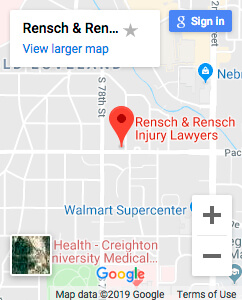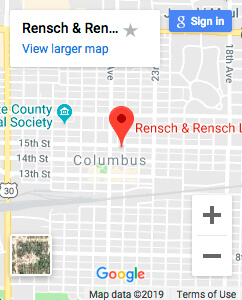What Are “No-Zones,” and Why Are They Important for Preventing Truck Accidents? Omaha Personal-Injury Lawyer Explains
Driving a commercial truck must be one of the most dangerous jobs in the United States. Consider the statistics: According to the most recent research from the Centers for Disease Control and Prevention, motor-vehicle accidents were the number-one cause of occupational fatalities in the United States in 2012, accounting for 25 percent of all deaths.
Truck drivers accounted for nearly half of these deaths. That’s a pretty big number – but this one might surprise you more: 74 percent of the fatalities caused by accidents involving big trucks were occupants of passenger vehicles, according to the National Highway Traffic Safety Administration.
Driving for long hours, often at night and through multiple cities at a time, navigating different climates and road conditions in a single stretch – all of these factors make driving a truck a hazardous occupation. This is why passenger vehicle drivers are advised to stay clear of three so-called “no-zones” around a truck: in the front, on the sides, and at the rear.
If you were injured in a truck accident, contact Rensch & Rensch Law. An Omaha truck accident lawyer will assess your case to determine if you have grounds for a claim.
Call 1-800-471-4100 to schedule a free consultation. You can learn more about personal-injury lawsuits arising from truck accidents by visiting USAttorneys.com.
Read on to learn more about the three “no-zones” of commercial trucks:
- Front No-Zone
Directly in front of a truck might not seem like a dangerous area. However, if an 18 wheeler is following too closely, then the truck driver will not have time to brake if you stop unexpectedly.
Due to their size and weight, trucks require a longer stopping distance than passenger vehicles. As such, you should never slow down after merging in front of a truck, and if a big rig is tailgating you, then change lanes and let it pass.
- Side No-Zones
Driving alongside a truck, especially a hefty 18 wheeler, is not a good idea. This is especially true if you cannot see the trucker’s eyes because that means you are in a blind spot. If the trucker is complacent and changes lanes, you may wind up in a side-swipe accident.
- Rear No-Zone
A truck driver’s rearview mirror is only effective if you maintain a safe following distance, but if you drive too close, you will most likely be out of the driver’s sight. Also, you will not be able to see past the truck, so you won’t notice hazards that could cause the 18 wheeler to brake suddenly. Drivers who tailgate CMVs are asking for a rear-end collision.
If you were injured in a truck accident, contact Rensch & Rensch Law. An Omaha personal-injury lawyer will explain your legal options.
Our attorneys have more than 45 combined years of legal experience. Call 1-800-471-4100 today to schedule a free initial consultation.



